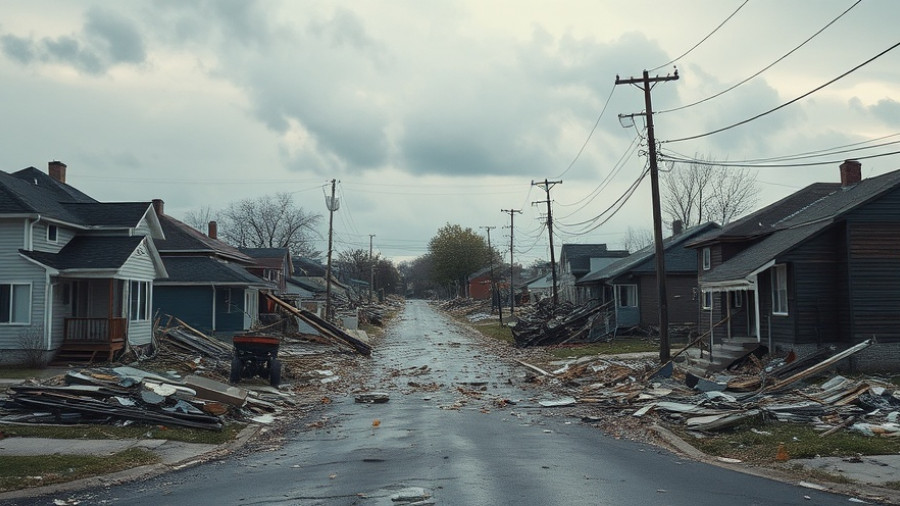
Storm Forecast: What to Expect This Weekend
This weekend, New York City and the Northeast brace themselves for a significant coastal storm expected to impact the region from Sunday through Tuesday. According to meteorologists, this storm could introduce a mix of strong winds, torrential rains, and coastal flooding — aspects of great concern for residents, especially those living in flood-prone areas. The U.S. Weather Prediction Center has indicated that rain amounts could range from 2 to 4 inches across New York and surrounding regions, replete with wind gusts peaking at 60 mph.
The Drought Before the Storm: An Unexpected Benefit?
While the forecast for this storm appears daunting, it brings with it a silver lining for areas suffering from drought conditions. Bob Oravec, a branch forecaster with the U.S. Weather Prediction Center, outlined that nearly 66% of New York land is currently experiencing drought. Neighboring states in New England, like Vermont and New Hampshire, are equally parched. The approaching storm could thus provide much-needed moisture to replenish parched landscapes, albeit at the risk of flooding and property damage.
Coastal Preparedness: What's Being Done?
City officials and emergency management agencies have ramped up their response efforts. The New York City Emergency Management (NYCEM) has been proactive, urging residents to prepare for potential flooding and disruption caused by the storm. Communities particularly vulnerable to flooding, such as southern Brooklyn and the Bronx shoreline, are under alert to ensure that residents stay informed through emergency broadcasting channels. Residents are advised to report outages and prepare their homes to withstand possible high winds and flooding by securing outdoor furniture and checking storm drains.
Protecting Yourself During a Flood: Insurance Insights
For those living in affected areas, understanding the nuances of property insurance can be crucial. Flooding can lead to extensive damages, and having the right policy is vital. Often, standard homeowners insurance does not cover flooding. Thus, homeowners should consider an additional flood insurance policy, especially in flood-prone regions. Additionally, it’s advisable to document all belongings and previous damages before the storm to expedite potential claims if damage occurs. Always review your insurance policy before a storm to ensure it meets your needs.
After the Storm: Filing a Property Damage Claim
Once the storm passes and damage occurs, the process of filing a property damage claim begins. It's essential to act quickly. Start by documenting any damage thoroughly, taking photographs as evidence. Notify your insurance adjuster to initiate the insurance claim process. Familiarize yourself with the claims timeline provided by your insurance company, as delays can happen, especially during peak event occurrences. Understanding your rights can empower you during negotiations, enhancing the chance of a successful settlement.
Neighborhood Concerns: Conversations Among Residents
Residents in areas like Red Hook, Brooklyn, which suffered severe damages during past storms such as Superstorm Sandy, express heightened concern over the anticipated storm’s impact. Local officials are encouraging the community to engage in conversations about mitigation strategies and preparation efforts. Many residents express the sentiment that while extra protective measures are being constructed, more can always be done to bolster defenses against the unpredictable nature of these storms. Community preparedness plays a key role in safety and recovery during and after extreme weather events.
Conclusion: Stay Prepared for the Unexpected
As New Yorkers prepare for an intense weekend full of storm potential, the priority becomes ensuring personal and family safety. Stay connected to local updates and heed the advice of emergency management agencies, and take measures to safeguard your home against property damage. Thus, it remains crucial to understand how to navigate the insurance claim process should the worst occur. By being proactive, individuals can mitigate risks and protect themselves from unnecessary distress in times of crisis.
 Add Row
Add Row  Add
Add 




Write A Comment